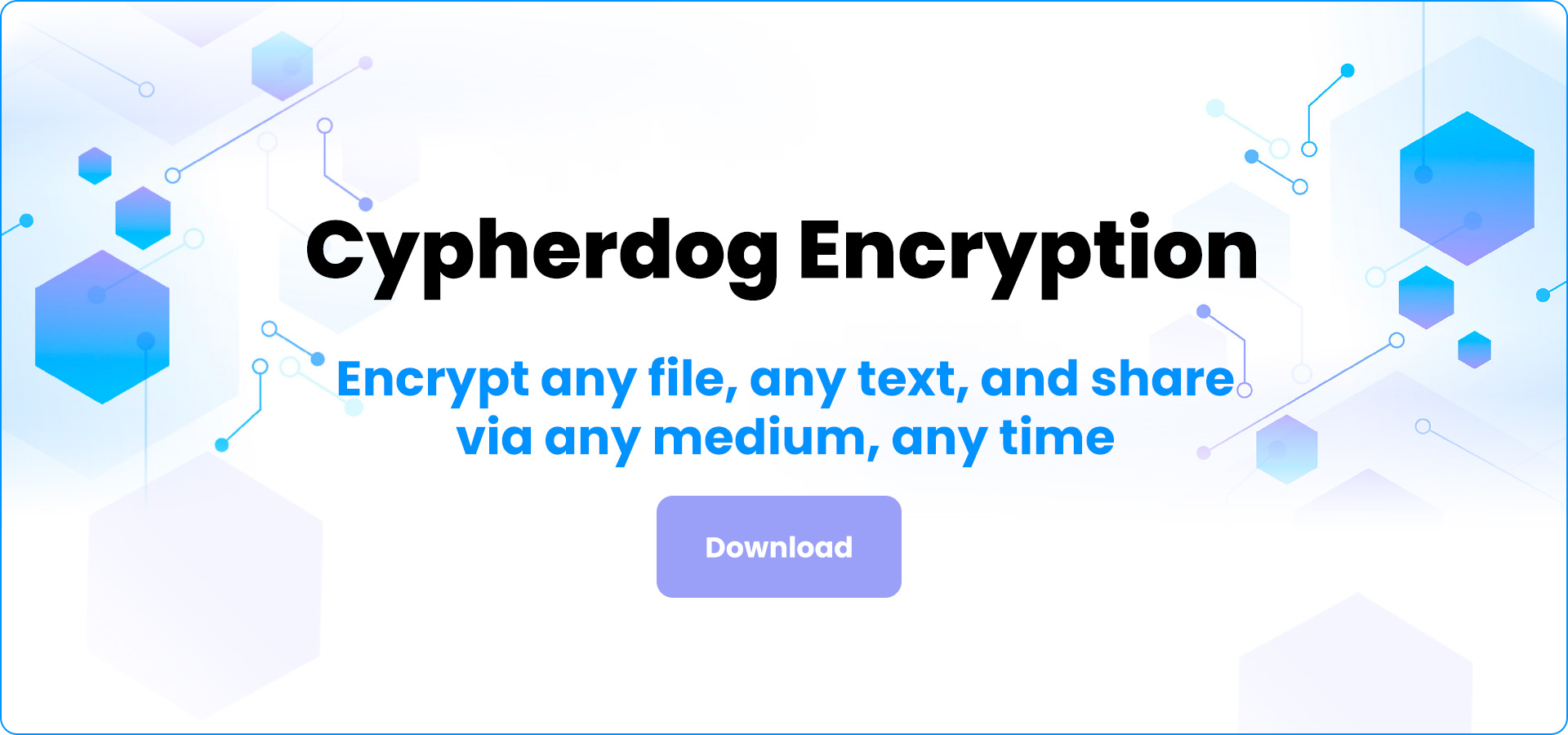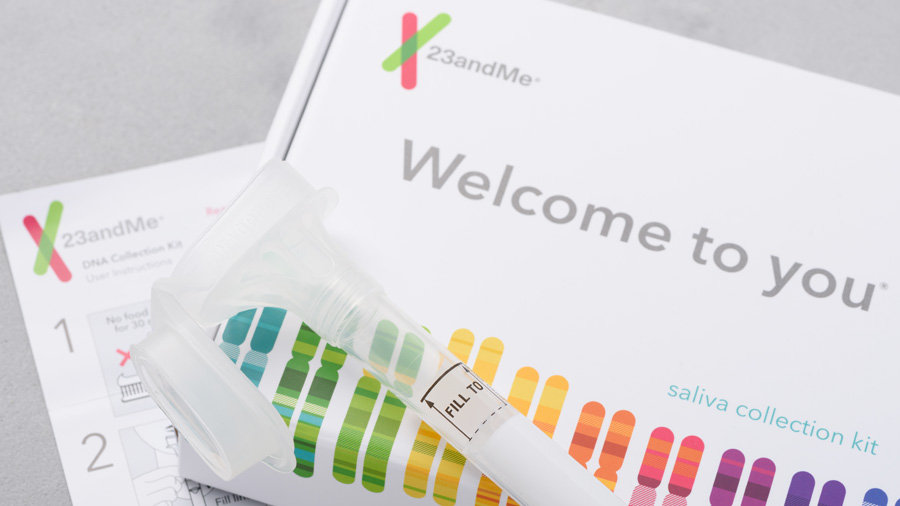How to keep encrypted files safe

The use of encryption is crucial in the present digital era for maintaining data security. Encryption involves the application of complex algorithms to convert plain text or data into code that cannot be understood without the correct decryption key. Encryption plays a key role in preventing unauthorized access and protects sensitive information from prying eyes. However, encrypting files alone is insufficient to guarantee their security. Ensuring that the encryption technique used is reliable and that the encryption keys are kept secure is also necessary.
This article will cover the following subtopics: the definition and explanation of encryption, the importance of keeping encrypted files safe, a brief history of encryption, and an overview of Cypherdog’s encryption technology. By the end of this article, you will have a comprehensive understanding of how to keep your encrypted files secure.
- Explanation of encryption
- Importance of keeping encrypted files safe
- Brief history of encryption
- Overview of Cypherdog’s encryption technology
- How to keep encrypted files safe
- Best file encryption software
- Use file security software
- What is file encryption
- Definition of file encryption
- What does it mean to encrypt a file
- Encrypted file sharing
- Transfer encrypted files
- Sending encrypted files with Cypherdog
- What customers say about Cypherdog Encryption
- How to prevent unauthorized access to files
- Advantages of using Cypherdog Encryption
- Future of file encryption and safety
- Advances in encryption technology
- Potential threats to file encryption
- Final thoughts
Explanation of encryption
Encryption is the process of transforming data into an unreadable format to prevent unauthorized access. In the context of file storage and sharing, encryption is an essential tool for keeping data secure. Encryption works by using a mathematical algorithm to scramble data, making it unreadable without the proper decryption key. The decryption key is a unique code that can unlock the scrambled data and convert it back into its original format. File encryption software is available in a variety of forms, including file encryption programs, tools, and software to encrypt files. The best file encryption software uses strong encryption methods to ensure that only authorized users can access the data. Some of the most common types of file encryption include personal file encryption, file sharing encryption, file transfer encryption, and file share encryption. Encrypted data transfer is also an important consideration when it comes to file security, as it helps protect data while it’s in transit. Overall, understanding how to encrypt files and choosing the right file encryption software is crucial for keeping your data safe from unauthorized access.
Importance of keeping encrypted files safe
The importance of keeping encrypted files safe cannot be overstated. In today’s digital age, sensitive data is constantly being shared and stored online, making it vulnerable to hackers and cybercriminals. Encrypting files helps ensure that only authorized individuals can access them, providing an extra layer of protection against potential data breaches. Without encryption, confidential information such as financial records, medical records, and personal details could be exposed and potentially used for malicious purposes. Additionally, encrypted file sharing allows for secure collaboration between parties without compromising the security of the data being shared. Overall, the importance of file encryption and keeping encrypted files safe cannot be overlooked in today’s increasingly digital and connected world.
Brief history of encryption
Encryption is not a new concept and has been used for centuries to protect sensitive information from unauthorized access. One of the earliest known examples of encryption dates back to ancient Greece, where the Spartans used a form of encryption known as the Scytale to transmit secret messages. Over time, various encryption methods have been developed, including substitution ciphers and the more complex polyalphabetic ciphers. The invention of the telegraph in the 19th century led to the development of more advanced encryption methods, such as the famous Enigma machine used by the Germans during World War II. Today, encryption remains a crucial tool in safeguarding sensitive data and protecting against cyber threats. With advancements in technology, new encryption methods and software continue to be developed to keep up with the ever-evolving landscape of cybersecurity.
Overview of Cypherdog’s encryption technology
Email is one of the most popular electronic communication channels. Like most digital services, it is vulnerable to cyberattacks, which may result in unwanted access to your mailbox and disclosure of confidential information. In the event of unauthorized use of the compromised mailbox, message recipients cannot confirm the sender’s identity.
Activities such as file transfer, file sharing, or messaging are susceptible to cyberattacks, often resulting in the leakage or theft of data for the purpose of economic espionage or compromising the organization. Invoice hacking and ransomware are the most rampant and dangerous cyber threats existing today. Cypherdog Encryption (CE) provides a solution to combat them.
Cypherdog Encryption allows you to encrypt and decrypt any text or file, regardless of its format or size, and share it using any medium, including emails supported by our Chrome, Edge and Firefox plugins for Gmail, Outlook and Thunderbird add-ins. Cypherdog Encryption works as a desktop application on all modern operating systems, such as Windows, macOS and Linux.
You can send and receive encrypted files and messages using any web client or native email client or Slack, WeTransfer, Google Drive, Dropbox, or any other communication method. Only the intended recipient will have access to the decrypted content.
How to keep encrypted files safe
One of the best ways to keep encrypted files safe is to use strong encryption software. There are many options available on the market, so it’s important to do your research and choose the one that is best suited for your needs. The best file encryption software should use a strong encryption algorithm, such as RSA with minimum 2048 bits key and AES 256-bit encryption, and have a user-friendly interface. Additionally, file encryption tools, such as secure deletion and password protection, can provide added layers of security. A good file encryption program should also allow you to encrypt individual files or entire folders, depending on your needs. Lastly, a reliable file encryption tool should be regularly updated to ensure it is protected against the latest threats. By using the right encryption software, you can significantly reduce the risk of data breaches and keep your sensitive files safe.
Best file encryption software
Cypherdog Encryption is based on a combination of asymmetric (RSA3072) and symmetric (AES-256) encryption. There is no “trusted” third party in our solution, including us, no Certification Authority and no other communication channel provider (e.g. email service provider). We do not have access to data encrypted by users because we do not have access or copies of the private keys needed for decryption.
Cypherdog Encryption is a comprehensive solution: on the one hand, it provides encryption of messages and keeps their content undisclosed to unlawful users; on the other hand, it allows the recipient to confirm the sender’s identity.
Cypherdog Encryption supports GDPR, DORA, NIS2, and ISO 2700x implementations and other regulations.
Use file security software
Using file security software is an essential step in keeping encrypted files safe. One such software is personal file encryption, which allows users to encrypt individual files and folders with a password or key. File sharing encryption ensures that files are encrypted during the sharing process, preventing unauthorized access. File transfer encryption is another type of security software that encrypts files during transfer, ensuring that they cannot be intercepted by third parties. File share encryption is a type of security software designed specifically for shared networks and cloud-based file sharing. Finally, shared file encryption is used to encrypt files that are shared between multiple users, ensuring that only those with the correct decryption keys can access the files. Using file security software like these can help ensure that encrypted files remain secure and protected from potential threats.
What is file encryption
Understanding what file encryption is can help you better protect your sensitive information. In simple terms, file encryption is the process of encoding data or information in such a way that only authorized parties with the proper decryption key or password can access it. Encrypted files can be shared and transmitted safely over networks or the internet because the data is transformed into a format that can’t be understood by anyone who doesn’t have the proper credentials. File encryption software is used to apply encryption algorithms to data, which makes it difficult for unauthorized users to access or read the files. By using file encryption, you can keep your confidential information and data safe from prying eyes and malicious attacks.
Definition of file encryption
File encryption refers to the process of encoding the data within a file so that it can only be accessed by authorized individuals who possess the decryption key. This encryption can prevent unauthorized access to sensitive information contained in the file, including personal information, financial data, and other confidential data. Essentially, file encryption takes plain text and uses a mathematical algorithm to convert it into cipher text that can’t be read by anyone without the appropriate key. This ensures that the data remains secure and private, even if it is intercepted or stolen.
What does it mean to encrypt a file
Encrypting a file means transforming its original content into a format that can’t be understood or interpreted by anyone who doesn’t have access to the encryption key or password. The encrypted file appears as a jumble of characters, symbols, and numbers, making it impossible to read without the correct decryption key or password. The encryption process provides an additional layer of security to sensitive or confidential information stored in files, ensuring that only authorized parties can access and understand the information. This is why encryption is essential for protecting the privacy and security of personal, business, or government data.
Encrypted file sharing
When it comes to sharing files, security is a top priority to protect sensitive information from falling into the wrong hands. This is where file share encryption software comes into play. It enables you to encrypt files and keep them safe while sharing them with others. Encrypted file sharing ensures that only the intended recipients can access the information by providing end-to-end encryption. This means that the data is encrypted before it leaves the sender’s device and is only decrypted once it reaches the recipient’s device, making it impossible for anyone else to intercept and access the data. With encrypted file sharing, you can rest assured that your files are safe and secure.
Transfer encrypted files
Transfer encrypted files refer to the process of securely transmitting files that have been encrypted to prevent unauthorized access. When files are transferred between parties, they may be vulnerable to interception or tampering by malicious actors. Encrypting the files before transfer ensures that the information remains confidential and secure. To transfer encrypted files, the sender must use encryption software to encrypt the files, and the recipient must have the necessary decryption key to access the files. This ensures that only authorized parties can access the files during transfer and when they are at rest.
Sending encrypted files with Cypherdog
To send encrypted files with Cypherdog, you can use its email encryption feature. To do so, follow these steps:
- Visit the Cypherdog website and read how it works.
- Download and install the Cypherdog Encryption software.
- Open the software, once installed, and click on the “Compose” button to create a new encrypted email.
- Add the recipient’s email address and type your message.
- Select the file and click on “Encrypt.”
- Click on the “Attach” button to add the file you want to send.
- Send it. Cypherdog will encrypt the file and send it to the recipient, who will have to use the same software to decrypt the file.
Sending encrypted files with Cypherdog is a safe and easy way to protect your sensitive data from unauthorized access.
What customers say about Cypherdog Encryption
“I like the asymmetric encryption that it provides in this segment. It protects our vital data from cyberattacks. Easy to encrypt and decrypt emails, including attachments, very easily and without any hassle. It offers data privacy and data leak protection at very reasonable pricing. User community is very huge due to its trust. Easy to deploy and works well on all Operating Systems, like Mac, Windows and Linux. Customer support is always available and ready to help the users at any time.” — Nikita S. – February 26, 2023
“Cypherdog Encryption is one of the most secure solutions for confidential communication. In my opinion, the most important features are absolute private key protection, zero-knowledge security method, and no “third party.” In my opinion, it is an ideal solution for those who want to maintain the highest confidentiality of communication and have a manageable tool for confidential communication via email.” — Artur Markiewicz – Cybersecurity Consultant
How to prevent unauthorized access to files
Preventing unauthorized access to files can be challenging, which is why encryption is a valuable tool for protecting sensitive information. However, there are some additional measures that can be taken to minimize the risk of data breaches and cyberattacks. One approach is to regularly update antivirus software and firewalls to prevent malware from infiltrating the system and potentially encrypting files. It is also important to use strong passwords and regularly change them to prevent unauthorized access to files. Moreover, it is crucial to limit access to sensitive files only to authorized personnel and to monitor user activity to detect any suspicious behavior. Finally, having a backup system in place can help mitigate the damage in case of a ransomware attack, allowing for the recovery of important files without having to pay the ransom.
Advantages of using Cypherdog Encryption
Cypherdog Encryption offers several advantages over other encryption solutions:
- Easy to Use: Cypherdog Encryption is designed to be user-friendly and simple to use, even for those with little to no technical expertise. The software’s intuitive interface makes it easy to encrypt files and share them securely.
- End-to-End Encryption: The Cypherdog Encryption technology provides end-to-end encryption, ensuring that your files are protected from the moment they are encrypted until they are decrypted by the recipient.
- Multiple Encryption Algorithms: Cypherdog Encryption uses multiple encryption algorithms, including AES 256-bit, to provide the highest level of security possible. This means that your files are protected by some of the most advanced encryption technology available.
- Secure Sharing: Cypherdog allows you to securely share encrypted files with others, even if they don’t have the software installed. This is done through secure web links, which can be password-protected and set to expire after a certain amount of time.
- Compliance: The Cypherdog Encryption solution is compliant with a range of regulatory standards, including GDPR, DORA, NIS2, and ISO 2700x . This makes it an ideal solution for businesses and organizations that need to comply with strict data protection regulations.
- Cost-Effective: Cypherdog’s encryption technology is cost-effective, with flexible pricing options that are designed to fit a range of budgets. This makes it an ideal solution for individuals, small businesses, and large organizations alike.
- Customer Support: Cypherdog provides excellent customer support, with a dedicated team of experts on hand to help you with any questions or issues you may have.
Future of file encryption and safety
The future of file encryption and safety is undoubtedly exciting and promising. With the rapid advancement of technology and the increasing need for secure data transfer and storage, it is expected that encryption technology will continue to evolve and become even more sophisticated in the coming years.
One trend that is likely to continue is the use of end-to-end encryption for all forms of communication and file sharing. This means that data is encrypted from the point of origin to the point of destination, ensuring that it remains secure at all times. As more and more businesses and individuals become aware of the importance of encryption, it is expected that this trend will become more widespread.
Another important development in the world of encryption is the growing use of blockchain technology. Blockchain is a decentralized and highly secure way of storing data, and it has the potential to revolutionize the way that data is encrypted and secured. It is expected that blockchain-based encryption systems will become more common in the future, as they offer a highly secure and transparent way of storing and sharing data.
Finally, it is important to note that the future of encryption is not just about technological advancements, but also about the development of new laws and regulations to ensure that data is kept safe and secure. Governments around the world are becoming increasingly aware of the need for stronger data protection laws, and it is expected that this trend will continue in the coming years.
In summary, the future of file encryption and safety is looking very promising, with new technologies and regulations making it easier than ever to keep data secure. As more and more individuals and businesses become aware of the importance of encryption, it is likely that we will see a continued growth in the use of encryption technology, leading to a more secure and protected digital world.
Advances in encryption technology
As technology continues to advance, so does the need for stronger and more secure encryption. Three major advances in encryption technology that are currently being developed are quantum encryption, homomorphic encryption, and post-quantum encryption. Quantum encryption involves using the principles of quantum mechanics to create a key distribution system that is virtually unbreakable. Homomorphic encryption allows computations to be performed on encrypted data without having to first decrypt it, thereby increasing the security of the data. Post-quantum encryption is a new form of encryption that is designed to be resistant to attacks from quantum computers, which could potentially break traditional encryption methods. These advances in encryption technology show that there is a continued effort to make encryption even more secure and effective in protecting sensitive information.
Potential threats to file encryption
As with any technology, file encryption is not immune to potential threats. Cyberattacks are one of the most common threats to file encryption and safety. Hackers and cybercriminals can use various tactics to gain access to encrypted files, including brute force attacks and phishing scams. Additionally, emerging technologies such as quantum computing may pose a threat to current encryption methods. Human error, such as using weak passwords or sharing encryption keys, can also compromise file encryption. Therefore, it is important to stay up-to-date on encryption technology and implement best practices for file security to mitigate these threats.
Final thoughts
As we conclude our discussion on file encryption and safety, it is important to recap some of the main points we have covered. We started by explaining what encryption is and why it is important to keep encrypted files safe. We then delved into the brief history of encryption and gave an overview of Cypherdog Encryption. We discussed the various ways to keep encrypted files safe, including using strong encryption software and file security software.
Additionally, we looked at the advances in encryption technology, such as quantum encryption, homomorphic encryption, and post-quantum encryption. We also examined the potential threats to file encryption and safety, such as cyber attacks, emerging technologies, and human error.
In conclusion, the importance of keeping files safe can’t be overemphasized, especially in a world where the risk of cyber attacks and data breaches is on the rise. Staying up-to-date on encryption technology is crucial in ensuring that sensitive information is protected. As such, we should all strive to adopt best practices in file encryption and safety to safeguard our personal and business data.


